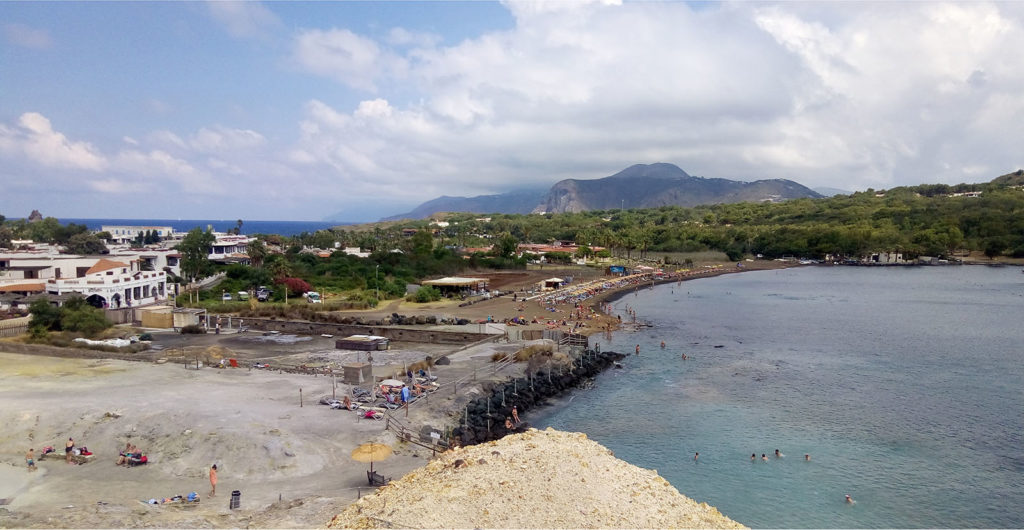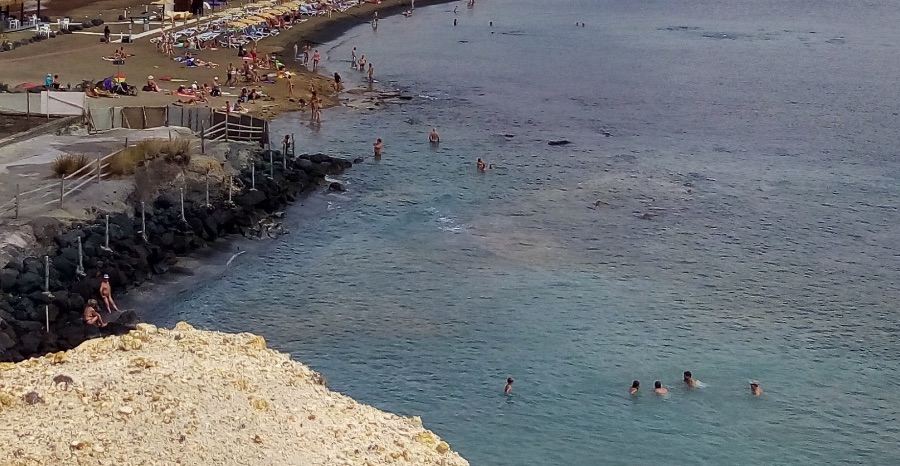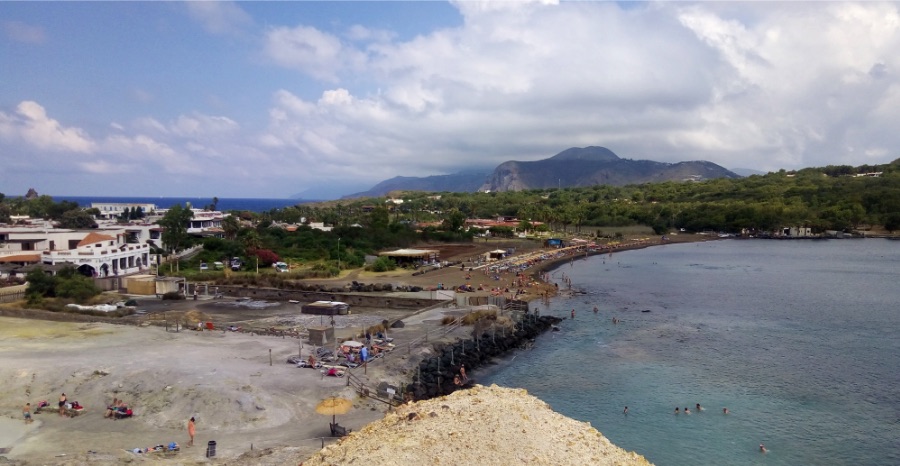One of the most famous tourist attractions of Vulcano is its thermal mud baths.
These are two hot mud pools where you can benefit from their thermal properties. It is really curious to observe the mud pools, which are grey and literally “boil”, taking on a completely malleable behaviour, adjusting to the shape of whatever is immersed in them.

Contrary to popular belief, these pools are not natural, but were created in the 1950s when studies were carried out on the area of Vulcano’s fumaroles. The thermal power of the mud baths is mainly due to the fact that they are between 33 and 38 °C, temperatures that make our muscles relax.

